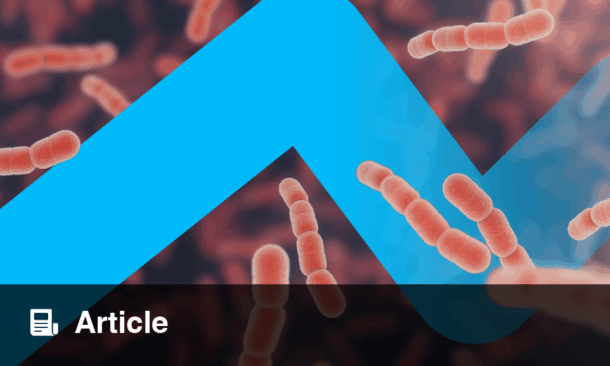Abstract
It is well known that consumption of a balanced diet throughout adulthood is key toward maintenance of optimal body weight and cardiovascular health. Research using animal models can provide insights into the programming of short and long-term health by parental diet and potential mechanisms by which, for example, protein intake may influence fetal development, adolescent health, and adult morbidity/ mortality. Malnutrition, whether consumption of too many or too few individual nutrients or energy, is detrimental to health. For example, in Westernised societies, one of the principal factors contributing towards the global epidemic of obesity is over-consumption of calories, relative to the expenditure of calories through physical activity. A large body of evidence now suggests that many chronic diseases of adulthood, such as obesity and diabetes, are linked to the nutritional environment experienced by the fetus in utero. Maternal consumption of a poor-quality, nutritionally unbalanced diet can programme offspring to become obese, develop high blood pressure and diabetes, and to experience premature morbidity and mortality. More recently, paternal diet has also been shown to influence offspring health through effects carried via the sperm that affect post-fertilisation development. Mechanisms underpinning such developmental programming effects remain elusive, although early development of the microvasculature in the heart and pancreas, particularly after exposure of the mother (or father) to a protein restricted diet, has been proposed as one mechanism linking early diet to perturbed adult function. In this brief review, we explore the longer-term consequences of maternal and paternal protein intakes on the progeny. Using evidence from relevant animal models, we illustrate how protein malnutrition may ‘programme’ lifelong health and disease outcomes, especially in relation to pancreatic function and insulin resistance, and cardiac abnormalities.
THE IMPACT OF MATERNAL NUTRIENT INTAKE ON THE HUMAN FETUS
Food intake and appetite are driven primarily by the need to ensure sufficient protein intake (the reference range for ‘normal’ human protein consumption is 80–120 g/day or 15–20% of total calories ~1,500–2,500 kcal/day).1 Dietary protein dilution through consumption of nutrient-poor, energy-rich food engenders increased energy intake. Although undernutrition has historically been of greater concern to developing or low-income nations, a recent study showed that even in countries with a high gross domestic product rating, 38% of pregnant women were not reaching the 16% recommended protein intake.2 Indeed, rather surprisingly, the World Health Organization (WHO) estimates that there were 1.1 million children ≤2 standard deviations weight-for-height (an index of protein energy malnutrition [PEM]) in the USA.3 Insufficient supply of vital nutrients, such as amino acids and metabolites generated by amino acid oxidation, during the reproductive years, can have a plethora of direct effects on the mother and her developing fetus and indirectly affect the subsequent individual as they grow toward adulthood.4
JUSTIFICATION AND LIMITATIONS OF ANIMAL MODELS
Ever since Barker first proposed that adult disease, especially heart disease, could be linked to low birthweight via fetal nutrition,5,6 a number of clinical7 and many laboratory animal studies8,9 have been carried out to confirm the biological validity of the hypothesis. Animal models are widely used as potential mechanistic insights can be achieved more readily than in human epidemiological studies. Environmental and genetic10 variation may be controlled whilst individual nutrients, such as protein, are manipulated through pregnancy and/or lactation. In addition, longer-term follow-up is possible in a relatively short time (a rat reaches middle age ~18 months of age). Animal models therefore allow for adult interventions to be tested to assess potential amelioration of the programmed phenotype, including multi-generational transmission over a reasonable timescale: a response not possible in clinical cohorts. As a case-in-point, 12 generations of protein malnutrition in rats (i.e. 6.8% protein as a percentage of total calories when protein adequacy in pregnant rats is considered to be 12–18% protein intake) had diverse effects on offspring, including lower birth weight, body size, and fertility; the effects reversed within three generations of nutritional rehabilitation.11 Each laboratory or farm animal used to ‘model’ a given experimental intervention with potential resonance for human cohorts needs to define why that animal is appropriate whilst accepting the potential limitations. These issues are too broad for a full discussion here, but readers should consider the following reviews.12,13
THE IMPACT OF MATERNAL MALNUTRITION ON THE ANIMAL FETUS
The first animal studies to model maternal protein-energy malnutrition in the lab showed that the offspring were physiologically compromised in many ways, such as having higher blood pressure14 and reduced glucose tolerance.15 An alternative experimental approach that generated intra-uterine growth restricted offspring (a common sequelae of PEM in developing countries) through bilateral uterine artery ligation from Day 19 of a 65–70 day gestation in the guinea pig, resulted in lower birth weight offspring that demonstrated subsequent accelerated catch-up growth.16 At 15 weeks postnatal age, pancreatic beta cell mass in nutrient restricted guinea pig offspring was 50% that of controls, and by 20 weeks offspring were obese with glucose intolerance that, by 26 weeks, had developed into insulin resistance, a hallmark of Type 2 diabetes mellitus.16 Hence, malnutrition in utero can increase susceptibility to Type 2 diabetes mellitus, partially mediated by accelerated childhood catch-up growth and a tendency toward obesity. Subsequent clinical epidemiological studies validated early accelerated growth as a predictor of cardiovascular mortality.17 Lower birth weight was also identified as a possible outcome when maternal caloric intake (as oppose to more severe uterine artery ligation) was restricted in rats,18 an effect also observed in human cohort studies.19-21 Furthermore, obesity was common in those individuals exposed to malnutrition during pregnancy.22 For further in-depth reviews of the developmental programming of metabolic syndrome, see references.8,13,23
As these studies became more refined in either the nutritional intervention or timing of malnutrition during gestation/lactation/post-weaning, a number of more direct effects of PEM have been observed: in late gestation, protein dilution tends to result in reduced birthweights with the offspring exhibiting catch-up growth post-natally. A number of theories have been proposed to account for this phenomenon, with the ‘thrifty’ phenotype remaining popular.24,25 Such a growth trajectory, relative restriction followed by un-restricted growth, has been proposed to underpin accelerated age-related decline, with individuals having shorter telomeres (in particular in the kidney).26 For example, Mortensen et al.4 found that murine newborn pups had 40% lower birth-weight when dams were fed 8% casein by weight throughout gestation, as compared to controls (20% casein). Similarly, intrauterine growth appeared impaired in mice at embryonic day (E)14.5 (a 16.5% reduction in weight) and E18.5 (a 13% reduction in weight) when fed 9% versus 18% protein (casein used as protein source) up to that point in gestation.27 A number of studies found that protein malnourished (9% casein) laboratory rodents have a shorter lifespan.23,28 Such early effects of maternal protein malnutrition on the developing fetus, when demand is unlikely to exceed supply of amino acids, suggests that the effects of maternal malnutrition are uncoupled from a simple supply of nutrients for energy. Indeed, in a recent study in sheep, 50% restriction of protein intake (a reduction from 18% protein to 9%; the dietary reference range for pregnant sheep is 10–12% crude protein) from Day 0 to Day 65 (0.45 gestation) had no effect on maternal, amniotic, or fetal plasma amino acid concentrations, with the exception of urea, which was significantly reduced, suggesting reduced protein turnover.29
EFFECTS OF MATERNAL MALNUTRITION ON THE PLACENTA
The greatest proportion of cell differentiation, fetal organogenesis, and angiogenesis occur during the first trimester of pregnancy. Before establishment of the placenta, possible nutrient or endocrine effects on the blastocyst can only be histotrophic. Thereafter, adverse placental development during the first trimester has the potential to impact second and third trimester development of the fetus, long after the nutritional conditions have changed.30 Placental weight, size, and vascularity can be considered indicators of placental function, and have a close relationship with fetal weight.31 Maternal diet has been shown to affect these placental factors in a number of species.27
EFFECTS OF MATERNAL MALNUTRITION ON PROGRAMMING OF OFFSPRING METABOLIC HEALTH
A number of studies have been conducted into the effects of maternal protein restriction on the fetus in relation to metabolism, insulin resistance, and obesity. Fernandez-Twinn et al.32 discovered that maternal protein restriction (rats: 8% versus 20% protein; gestation and lactation) led to hyperinsulinaemia and reduced muscle insulin-action i.e. peripheral insulin resistance in the 21-month old offspring. In protein restricted exposed mice where accelerated postnatal catch-up growth was not observed (8% versus 20% casein, conception to weaning), no differences in adult glucose tolerance were noted relative to protein replete controls.33 These effects of protein dilution on offspring metabolic phenotype appear highly influenced by sex; young males appear unaffected but exhibit a rapid age-related decline, whereas females are relatively unaffected throughout adulthood (at least to 21 months of age).25,32,34 Second-generation rat studies have also shown persistent adverse effects on glucose and insulin metabolism.35 From the first animal studies to have specifically investigated the developmental programming paradigm circa 1994 until 2010, the clear focus was on the delayed developmental consequences of maternal malnutrition, with almost complete disregard to any paternal contribution (despite contributing 50% of the fetal genome). The rationale for this was clear: the fetus developed in the maternal environment and early studies had illustrated how it is the maternal environment that had the greatest impact on offspring.36 However, in 2006 Pembrey et al.37 suggested for the first time that developmental programming effects may be passed transgenerationally down the paternal lineage. There was experimental confirmation of an exclusive male-line effect in 2010,38,39 as outlined below.
EFFECT OF PATERNAL MALNUTRITION ON PROGRAMMING OF OFFSPRING HEALTH
In a series of independent studies it was shown that paternal diet alone could influence metabolic health of the next (F1 generation) and further generations (F2, F3) of offspring.38,39 Further studies subsequently outlined paternal programming of metabolic control40 and hepatic repair processes,41 obesity,42 diabetes,43 and cardiovascular function.44 Mechanisms for paternal programming via maternal protein malnutrition are currently being elucidated, but by definition must be transmitted via sperm. Recent work has implicated alterations to the methylation of ribosomal DNA in sperm,45 an effect most pronounced during early specification of the gonads, as oppose to during adolescence.46 Collectively, these reports demonstrate non-genetic, intergenerational transmission/programming of an ‘acquired phenotype’ after paternal malnutrition alone. They illustrate that the environmental burden on offspring phenotype is not just the territory of the mother. The implication for future generations is clear: malnutrition during early development can exert its deleterious effects for many generations to come, even after correction of the nutritional inadequacy. The likely mechanism is epigenetic inheritance. Jean-Baptiste Lamarck would be proud.
PROGRAMMING OF OFFSPRING CARDIAC FUNCTION
Cardiac dysfunction has been observed in rats subjected to maternal protein malnutrition (9% versus 18% casein prior to mating, throughout pregnancy until weaning).7,47,48 Effects were seen in newborn offspring (altered cardiomyocyte apoptosis, depressed cardiac ejection fraction) and in aged male and female adults (40 weeks of age) that had left ventricular hypertrophy and increased pulse pressure.7 Hypertension has also been observed in 7 week old offspring (rat: 9% versus 18% casein prior to mating, throughout pregnancy), and although the maternal protein restricted offspring were born smaller, pup weights were unaltered in comparison to controls at 7 weeks of age.49 Elevated systolic blood pressure after maternal protein restriction appears to be a relatively consistent outcome regardless of the period of nutritional restriction even when protein malnutrition is confined to the period prior to mating or very early during gestation50 although others have noted reduced systolic arterial pressure with elevated sympathetic tone in rats 90 days postpartum (8% versus 17% casein; gestation and lactation).51 Tappia et al.47 also observed maternal protein restricted-exposed rats to have depressed ejection fractions in the first 4 weeks of life, increased left ventricular internal diameter and posterior cardiac wall thickness during both diastolic and systolic phases of the cardiac cycle to 8 weeks of age, together with a multitude of changes to cardiac gene expression. Recently, maternal protein restricted (8% versus 20% throughout gestation; rat) induced accelerated postnatal growth to 22 days postnatal age that was accompanied by increased cardiac nitrosative and oxidative-stress with concomitant increases in DNA damage and base-excision repair enzyme expression.52 Indeed, greater effects on the heart appear to be observed when maternal protein restriction is followed by accelerated post-natal growth during adolescence.53,54 Furthermore, it is Increasingly becoming apparent that protein-malnutrition induced programming of cardiovascular function is highly sex-specific55 with males, in general, being more susceptible than females. Exact mechanisms have not been elucidated, although age-related changes in sex-hormone status and cellular action, coupled with programmed alterations to hypothalamic-pituitary-adrenal axis sensitivity are central to the effect.56,57
CONCLUSIONS
Maternal or paternal consumption of a protein-restricted diet can have a range of physiologic outcomes in the offspring. In general, lower weight at birth is followed by accelerated post-natal growth. The latter has become designated as catch-up but may simply be regression to the mean. Nevertheless, accelerated early growth appears as powerful a programming stimulus as disproportionate fetal growth. The consequences for the ‘programmed’ individual have now extended beyond concern for the F1 generation to the F2 and F3 generations as epigenetic inheritance of an acquired phenotype becomes a reality. The fetal origins hypothesis matured into the developmental programming of adult health or disease, to encapsulate the multivariate effects on the fetus, the neonate and the growing adolescent individual. The paradigm has recently been extended to include paternal diet and in the years to come will no doubt be extended further to include grandmaternal and grandpaternal effects as the children of prospectively studied cohorts age and have families of their own. What is obvious is that the dire effects of early malnutrition will have an impact on populations for many generations to come.








